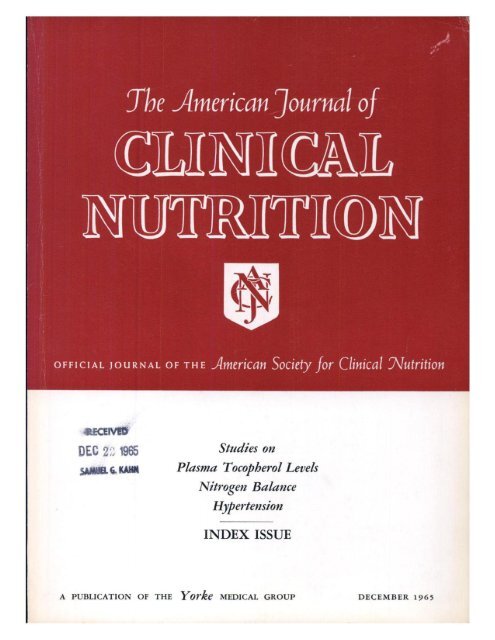Diet quality patterns and chronic kidney disease incidence: a UK Biobank cohort study
IF 6.5
1区 医学
Q1 NUTRITION & DIETETICS
引用次数: 0
Abstract
Background
Only a few studies have investigated the role of diet on the risk of chronic kidney disease (CKD) in European populations and have mainly focused on the Mediterranean diet. This is the first study to evaluate the association between various diet quality indices and CKD incidence in British adults.
Objective
To study the relationship between a set of 6 different diet quality indices and CKD incidence among British adults.
Methods
: A prospective cohort with 106,870 participants from the UK Biobank, followed from 2009 to 2012 through 2021. Food consumption was obtained from ≥2 24-h dietary assessments. Dietary patterns were assessed using previously established indices: Alternate Mediterranean Index (aMED), Alternative Healthy Eating Index 2010, dietary approaches to stop hypertension (DASH), healthful plant-based diet index (hPDI), unhealthful plant-based diet index (uPDI), and dietary inflammatory index (DII). Incident CKD was obtained from clinical records, death registries, and self-reports. Analyses were performed with Cox regression models and adjusted for the main confounders.
Results
After a median follow-up of 9.27 y, 2934 cases of CKD were ascertained. Hazard ratios (95% confidence interval) of CKD for the highest compared with lowest tertile of adherence to each diet score were 0.84 (0.76, 0.93) for aMED, 0.94 (0.85, 1.03) for alternative healthy eating index 2010, 0.77 (0.70, 0.85) for DASH, 0.79 (0.72, 0.87) for hPDI, 1.27 (1.16, 1.40) for uPDI, and 1.20 (1.18, 1.33) for DII. The results were robust in sensitivity analyses.
Conclusions
In British adults, higher adherence to the aMED, DASH, and hPDI patterns was associated with lower risk of CKD, whereas greater adherence to the uPDI and DII patterns was associated with greater risk.
饮食质量模式与慢性肾病发病率:英国生物库队列研究。
背景:在欧洲人群中,只有少数研究调查了饮食对慢性肾脏疾病(CKD)风险的作用,主要集中在地中海饮食。这是第一个评估英国成人各种饮食质量指标与CKD发病率之间关系的研究。方法:从2009-2012年到2021年,来自英国生物银行的106870名参与者进行了前瞻性队列研究。从至少两次24小时饮食评估中获得食物消耗。使用先前建立的指数评估饮食模式:替代地中海指数(aMED),替代健康饮食指数2010 (AHEI-2010),停止高血压的饮食方法(DASH),健康植物性饮食指数(hPDI),不健康植物性饮食指数(uPDI)和饮食炎症指数(DII)。从临床记录、死亡登记和自我报告中获得CKD事件。采用Cox回归模型进行分析,并根据主要混杂因素进行调整。结果:中位随访9.27年,确诊CKD 2934例。CKD对每种饮食评分的最高和最低四分位数的风险比(95%置信区间)分别为:aMED 0.84 (0.76, 0.93), AHEI 0.94 (0.85, 1.03), DASH 0.77 (0.70, 0.85), hPDI 0.79 (0.72, 0.87), uPDI 1.27 (1.16, 1.40), DII 1.20(1.18, 1.33)。结果在敏感性分析中是稳健的。结论:在英国成年人中,较高的阿米德、DASH和hPDI模式的依从性与较低的CKD风险相关,而较高的uPDI和DII模式的依从性与较高的风险相关。
本文章由计算机程序翻译,如有差异,请以英文原文为准。
求助全文
约1分钟内获得全文
求助全文
来源期刊
CiteScore
12.40
自引率
4.20%
发文量
332
审稿时长
38 days
期刊介绍:
American Journal of Clinical Nutrition is recognized as the most highly rated peer-reviewed, primary research journal in nutrition and dietetics.It focuses on publishing the latest research on various topics in nutrition, including but not limited to obesity, vitamins and minerals, nutrition and disease, and energy metabolism.
Purpose:
The purpose of AJCN is to:
Publish original research studies relevant to human and clinical nutrition.
Consider well-controlled clinical studies describing scientific mechanisms, efficacy, and safety of dietary interventions in the context of disease prevention or health benefits.
Encourage public health and epidemiologic studies relevant to human nutrition.
Promote innovative investigations of nutritional questions employing epigenetic, genomic, proteomic, and metabolomic approaches.
Include solicited editorials, book reviews, solicited or unsolicited review articles, invited controversy position papers, and letters to the Editor related to prior AJCN articles.
Peer Review Process:
All submitted material with scientific content undergoes peer review by the Editors or their designees before acceptance for publication.

 求助内容:
求助内容: 应助结果提醒方式:
应助结果提醒方式:


